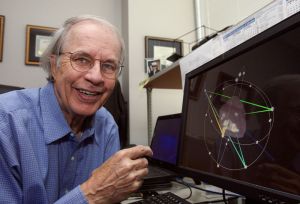
Meteorites: Not If but When and Where
Experts say we can expect five to ten meteorite impacts per year. In most cases, the objects disintegrate in the atmosphere before they can impact the Earth’s surface, or they hit uninhabited and inconsequential locations. NASA’s Near Earth Object Program keeps a risk table of possible space rock threats informed by a “highly automated collision monitoring system” called Sentry.
Though NASA monitors colossal asteroids that they’ve already discovered, redirecting the smaller and still devastating meteors that break off of them, and other objects that approach our planet undetected, is still not something we can do with confidence. Such an effort would take a significant amount of concentrated and precisely directed energy. For this, Dr. Richard Fork, an electrical and computer engineering professor at University of Alabama in Huntsville, looked toward the sun.
With Great Energy Comes Great Defense
Dr. Fork’s newly patented system consists of perpetually orbiting spacecraft that take energy from sunlight and focus it in the form of a powerful laser. His research involves quantum optical phenomena and sets a simplified plan to establish what he calls “an optically based power infrastructure in space.”

Michael Mercier, UAH
Prelude to a Visionary Enterprise
This system will enable us to protect our planet from any space object that we believe poses a threat to humanity. The patent for this system positions the research to become a leading enterprise, one that will revolutionize energy technology. The power of the sun will be harnessed in space and be made available for our use there, a literally out of this world rendition of the most visionary replacement for fossil fuel that we have—sunlight.